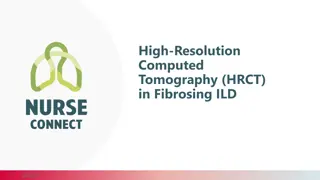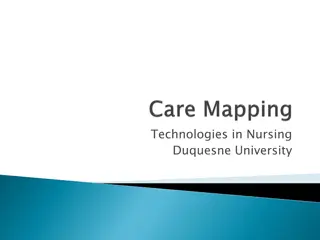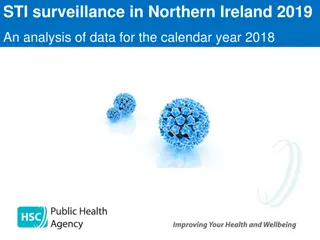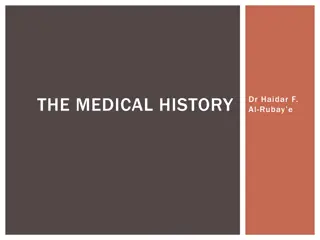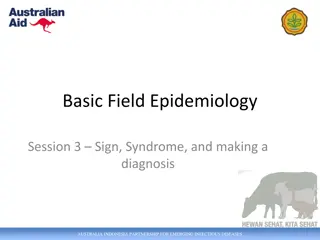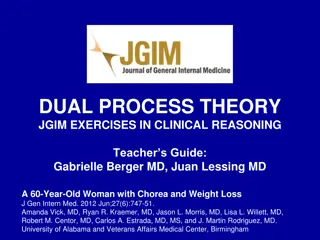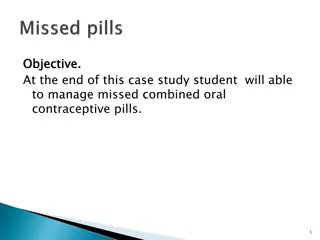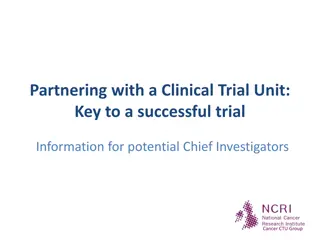Understanding Key Clinical Approaches and Commonly Missed Aspects in Medical Diagnoses
Explore essential clinical approaches in diagnosing acute and chronic problems, along with strategies for effective studying and preparing for uncommon scenarios. Discover commonly missed aspects in familiar approaches and less familiar presentations in various medical conditions.
Download Presentation

Please find below an Image/Link to download the presentation.
The content on the website is provided AS IS for your information and personal use only. It may not be sold, licensed, or shared on other websites without obtaining consent from the author. Download presentation by click this link. If you encounter any issues during the download, it is possible that the publisher has removed the file from their server.
E N D
Presentation Transcript
Station 5 Wang Zhemin
General 3 min History + 3 min Examination + 2 min Counseling + 2 min Discussion Acute Problem: Contextualised differentials Chronic Problem: Diagnose, evaluate features, complications, associations Concerns: Explicitly elicit Counseling: Diagnosis/Differentials, Disposition, Treatment (symptoms, underlying), Follow Up/Discharge Advice
How to Study/Think? Approaches (top down): Breadth (types and content), patterns, thinking of paces diagnoses (guide inspection) Conditions (bottom up): Know enough (don t need too much) about your PACES favourites Concept of opening doors and moving up floors
Knowing What is Common Grave s (7): Neck swelling, fever, periodic paralysis, agranulocytosis Acromegaly (7) Psoriasis (5): Joint Pain Systemic Sclerosis (5): SOB Ank Spond (4): Back Pain Gout (4): Joint pain Others: Retinitis pigmentosa, MEN, NF, SLE, HHT, RA, Sjogren s Tendon Xanthoma, DM, Hypothyroidism, TIA/hemiplegic migraine, CMT, Osteogensis imperfecta, ITP
Preparing for the Uncommon Approaches Commonly missed aspects of familiar approaches Unfamiliar approaches Conditions PACES Favourites Knowing how these can present in a station 5 scenario
Commonly missed things in familiar approaches Headache: Hypertension, hyperviscosity, GCA Chest Pain: Odynophagia Hypertension: OSA, drugs, vasculitis Lower Limb Swelling: Thyroid disease, drugs (CCB) Abdominal Pain: Medical causes (hereditary angioedema, familial mediterranean fever) Diarrhea: VIPoma, carcinoid
Less familiar approaches Tremors, chorea Visual problems Amnesia Parasthesia Hand pain Weight gain Sweating Itch Flushing Eye swelling Rash: Raynaud s, erythema nodosum, pyoderma gangrenosum
PACES Favourites Rheum + Endocrine conditions most common Neuro conditions possible Wilson s, PBC, Polyglandular Autoimmune Syndrome, MEN Syndrome, Amyloidosis, Retinitis Pigmentosa, HHT, NF, Tuberous Sclerosis, Sturge Weber, Acute Intermittent Porphyria, Osteogenesis Imperfecta, VHL, Peutz Jeghers, Carcinoid, Hereditary Angioedema
Patterns Headache Headache + Hypertension: Pheochromocytoma, Hypertension causing HA, CCB use, Raised ICP with Cushing s reflex, Pituitary tumours with 2 endocrinopathy (acromegaly, cushing s) Headache + BOV: GCA, glaucoma, BIH, SOL with visual tract compromise (pituitary tumour, cerebral SOL) Thunderclap Headache: SAH, cerebral venous sinus thrombosis, cervical artery dissection, reversible cerebral vasoconstriction syndromes Headache with raised ICP features: SOL (rmb pituitary tumour), BIH, thrombosis/hemorrhage Abdominal Pain Intermittent: Biliary colic, renal colic, constipation colic, gut claudication, acute intermittent porphyria, hereditry angioedema Dark urine: Ureteric colic, biliary obstruction, acute intermittent porphyria
Examples Easy: Inflammatory back pain secondary to psoriatic arthropathy Hx of back pain inflammatory in nature evaluate for autoimmune, infective, neoplastic causes Hx yielding of rash suggestive of psoriasis Consider other cx of psoriasis e.g. ILD, nail changes Intermediate: LL swelling from nephrotic syndrome from amyloidosis in patient with RA History of LL swelling sugestive of hypoalbuminemia Cause of hypoalbuminemia suggestive of nephrotic syndrome History of RA suggestive of possible amyloidosis; Ddx might include NSAID induced nephrotic syndrome
Examples Difficult: Polyuria secondary to diabetis insipidus from hypercalcemia due to hyperparathyoidism in MEN syndrome Polyuria history Features of hypercalcemia established Evaluate for cause of hypercalcemia malignancy, myeloma, TB, sarcoid, PTH Explore laterally to pick up other MEN symptoms or fam/personal hx




